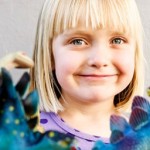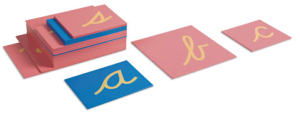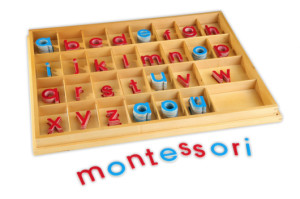
“A language is the expression of agreement among a group of men, and can be understood only by those who have agreed that special sounds shall represent the same ideas and things, so language becomes a wall that separates group from group, while uniting members of the same group.” (Montessori, 1989, P. 31)
Children all over the world who hear human speech absorb their native language, regardless of their nationality or the complexities of that language. Infants babble all the sounds of all languages but slowly select those sounds that belong to their native tongue and lose the power to pronounce those that are not part of their language. Over the first three years of life, children learn to combine the babbling sounds into syllables, then words and phrases and eventually sentences. By six years of age, they know the meaning of many words and can construct varied and complex sentences using the rules of grammar and syntax to convey and interpret new ideas. There are four integrated aspects to learning language:
– Listening, speaking, reading and writing
Effective use of language underpins all aspects of the Montessori curriculum. As well as being a subject in itself, language is also an essential learning tool for all activities/lessons in the classroom. Listening and reading (receptive language) help us share other people’s thoughts, while speaking and writing (expressive language) are means of self-expression. The development of listening and speaking skills are on-going throughout childhood and are constantly encouraged in the Montessori classroom e.g. Circle Time. Reading and writing skills are introduced in the 3-6 Montessori class after extensive indirect preparation for these complex activities, e.g. sensorial materials, left to right orientation etc.
The Montessori Language programme uses the phonetic method combined with the whole language approach to teaching language. The Montessori programme follows the natural pattern, already discussed, of developing speech, i.e. sounds, syllables, words, phrases and sentences and is constantly reinforced by language – rich experiences in the classroom.
Programme Content in our Pre-School:
Listening skills
- Story telling
- Circle time
- Three period lessons
- Rhymes, songs
- Drama
Speaking skills
- Discussion
- Circle time
- Speech games
Early language skills (pre-reading and writing)
- Visual memory
- Identifying, copying and extending patterns
- Sequencing
- Matching
- Stories
- Labelling
- Charts/posters
- Left-right, top-bottom orientation
- Drawing/colouring (Pencil control)
Preparation for writing and reading
- Insets for design
- Sandpaper letters
- Large moveable alphabet with pink and blue material
- Language games
- Library

Exercises / Illustrations
The first 4 strands are introduced to the younger child and developed as s/he is ready. Reading is introduced when sufficient preparation has been done.
Listening skills
Activities to help the child develop skills in giving attention to and comprehending oral communication
- Stories: following the story line
- Circle time: listening to each speaker
- Three period lessons: attending to speaker
- Rhymes, songs: listening and repeating
- Drama
Speaking skills
Activities to help the child develop skills in expressing him/herself orally
- Discussion & circle time: every child is invited to take part in discussing various topics and given time to do so
- Speech games: fun activities to encourage oral communication
Early language skills (pre-reading and writing)
- Visual memory: various memory games
- Identifying, copying and extending patterns: as in Algebra
- Sequencing: activities such as ordering the sequence of a story or explaining how to do an everyday chore
- Matching: involves identification of similarities & differences
- Stories: familiarity with the structure & sequence of an account
- Labelling: linking oral & written forms of language
- Charts/posters: linking oral & written forms of language
- Left-right, top-bottom orientation: Practical Life, Sensorial exercises encourage this skill
- Drawing/colouring (Pencil control)
Preparation for writing and reading
Maria Montessori believed that writing emerged before reading when presented to pre-school children. Writing is the encoding of one’s own thoughts whereas reading can be seen to be more abstract as it decodes the thoughts of others. Many early exercises, such as the Sandpaper Letters and the Large Moveable Alphabet, prepare the child for both writing and reading.


